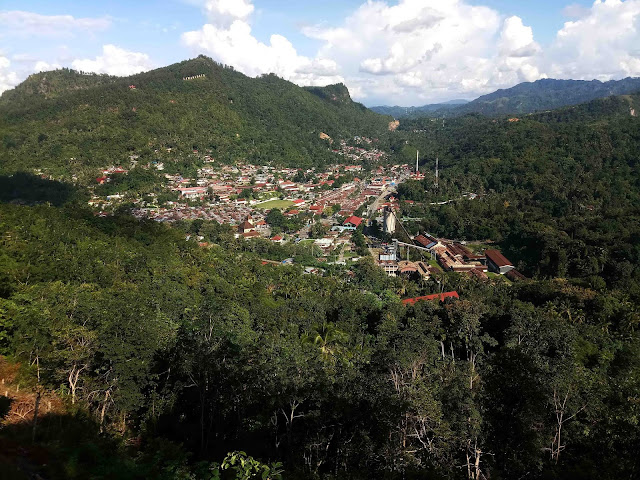Sawahlunto is a small town in Indonesia located in Bukit Barisan West Sumatra. In 1858, De Groet believed that the area around the Ombilin River contained coal deposits. De Groet's allegations were then followed up by Ir Willem Hendrik De Greve in 1867. A more thorough investigation by Ir Verbeck produced surprising findings. It is suspected that the area contains coal with a range of up to tens of millions of tons.
The city of Sawahlunto in West Sumatra transformed itself from a coal mining town into a tourist city since early 2001. In Kota Sawahlunto there are two large hotels that utilize heritage buildings, namely Parai City Garden Hotel and Hotel Ombilin. Even Parai City Garden Hotel utilizes heritage buildings which was formerly called "Budjangan Building:"
In addition to the two big hotels, Sawahlunto also has about 53 homestays with capacity of 116 rooms. Homestay in Sawahlunto is incorporated in the Homestay Association Sawahlunto where the rooms and services are standardized PHRI (Perhimpunan Hotel and Restoran Indonesia) of West Sumatra and Sawahlunto Tourism Office. This homestay rental price starts from Rp 70,000 to Rp 250,000 and includes two meals.
The government seeks to update the location of the former mine relic that became a tourist destination. the most famous of which is Mbah Soero Mine Hole, which can be visited by tourists at any given time/
In this city
there is also Ransum Warehouse Museum is a building complex former
kitchen of coal miners and patients RSU Sawahlunto which at that time
amounted to thousands. This building was built in 1918 during the Dutch colonialism. The common kitchen is equipped with two large warehouses and a steam generator to cook 3,900 kg of rice daily for coal miners.
Sawahlunto city also has heritage buildings that used to be a place to socialize (Societeit) located in the city center with very well maintained condition. Currently used as a Cultural Building
Peningkatan tersebut
juga diiringi upaya pembaruan lokasi bekas peninggalan tambang yang
menjadi tujuan wisata. Beberapa di antaranya adalah gereja peninggalan
kolonial, Museum Gudang Ransum, Lubang Tambang Mbah Soero, serta stasiun
dan Museum Kereta Api Sawahlunto yang menyediakan trip kereta uap Mak
Itam. Baru-baru ini Sawahlunto juga membangun Waterboom, Dreamland,
Bioskop 4 Dimensi, dan Taman Satwa.
Artikel ini telah tayang di Kompas.com dengan judul "Sawahlunto, dari Kota Tambang Jadi Kota Wisata", https://travel.kompas.com/read/2013/06/13/14111881/Sawahlunto.dari.Kota.Tambang.Jadi.Kota.Wisata.
Artikel ini telah tayang di Kompas.com dengan judul "Sawahlunto, dari Kota Tambang Jadi Kota Wisata", https://travel.kompas.com/read/2013/06/13/14111881/Sawahlunto.dari.Kota.Tambang.Jadi.Kota.Wisata.
In this
city is also still seen the church remains a very preserved ko0lonial,
church position is at the end of a two-way meeting in the city center. A
historical evidence that colonialism also once ruled here, where there
is a fairly large church amid the majority of its population today that
is dominated by the Moeslem population
n
addition there are also in Sawahlunto City railway museum equipped with
railroads ever used and locomotive, dubbed Mak Itam, the museum was
formerly a railway station of Sawahlunto city
Some of
the coal mining remains also visible from PTBA office buildings using
old buildings and also used facilities used in managing coal mining and
all of them are located in the city of Sawahlunto
in Saringan area there are 3 silos. The third dimension of the silo is indeed extraordinary as if showing the past glory of Sawahlunto coal mine. In addition to silos there is a giant sizing plant as well. There are also rails connected to this Filter Area. You can imagine how busy and magnificent Sawahlunto at that time. Green grass adds to the beauty and robustness of this Saringan Area.
Even the official homes for Sawahlunto city leaders also take advantage of the old house of colonial relics
Ending this story there are still some photos of the condition of
Sawahlunto City which at first glance similar to the atmosphere in the
Netherlands, check it out

















